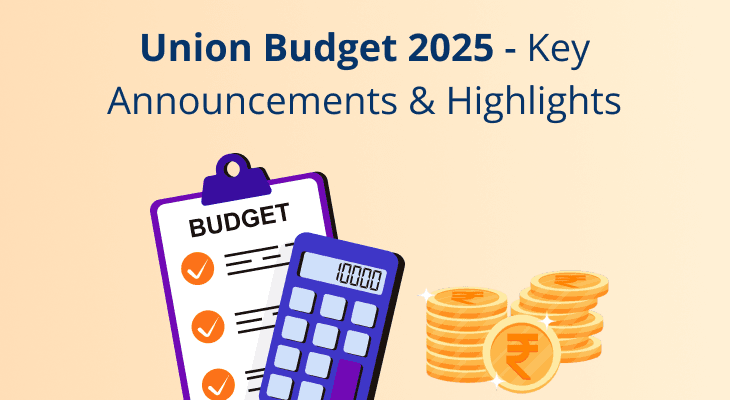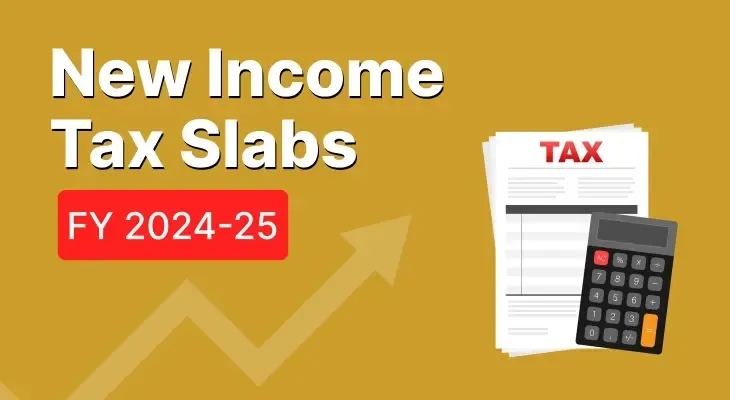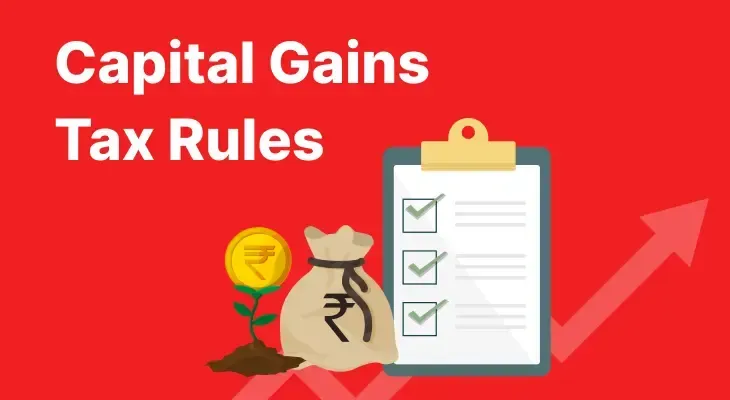
Union Budget 2025 - Key Announcements & Highlights
The Union Budget 2025, presented by Finance Minister Nirmala Sitharaman, introduces a range of measures aimed at driving economic growth, increasing investments, and providing relief to taxpayers. With a strong focus on tax simplification, infrastructure development, and financial sector reforms, the budget sets the stage to kickstartIndia's slowing economic growth. Here is a summary of the major budget announcements, including tax changes, investment policies, and initiatives for different sectors.
Union Budget 2025 - Key Points:
- Taxpayer relief: Revised income tax slabs to increase disposable income.
- Investment boost: 100% FDI allowed in the insurance sector to attract global investors.
- TDS and TCS rationalisation: Simplified tax deduction and collection processes to reduce compliance burdens.
- MSME reforms: Increased investment and turnover limits to support small businesses.
- Infrastructure push: Enhanced funding for the UDAN scheme to improve regional air connectivity.
- Digital economy focus: Policies to promote fintech, AI, and blockchain adoption.
Changes in Income Tax Slabs Under the New Regime
One of the most anticipated aspects of the budget was income tax reforms. The income tax rebate limit under Section 87A has been increased to ₹ 12 Lakh from ₹7 Lakh in the new tax regime. This means individuals earning up to ₹ 12 Lakh will not need to pay any tax. This is expected to provide relief to the middle class and boost consumption. The revised income tax slabs under the new tax regime are:
Income Tax Slabs | Tax Rates |
Up to ₹ 4,00,000 | NIL |
₹ 4,00,001 - ₹ 8,00,000 | 5% |
₹ 8,00,001 - ₹ 12,00,000 | 10% |
₹ 12,00,001 - ₹ 16,00,000 | 15% |
₹ 16,00,001 - ₹ 20,00,000 | 20% |
₹ 20,00,001 - ₹ 24,00,000 | 25% |
More than ₹ 24,00,000 | 30% |
Note: After calculation of tax under the new tax regime, you will have to claim rebate under section 87A to not pay tax on your income up to ₹12 lakh (post deductions & exemptions)
Rationalisation of TDS and TCS
To streamline tax compliance, the budget introduces amendments to Tax Deducted at Source (TDS) and Tax Collected at Source (TCS):
- Higher TDS thresholds on interest income for senior citizens: The limit for tax deduction on interest earned under section 194A has been increased to ₹1 Lakh from ₹50,000.
- TDS exemption on rental income: The annual TDS threshold for rental income under section 194I of the Income Tax Act has been raised to ₹6 Lakh from ₹2.4 Lakh, reducing compliance burdens for property owners.
- Changes in TCS on foreign remittances: The government has revised TCS rates under the Liberalised Remittance Scheme (LRS) under section 206C(1G) of Income Tax Act. The threshold for tax collection on foreign remittances has been increased to ₹10 Lakh from ₹7 Lakh.
- Removal of higher TDS for non-filers: Previously, non-filers of tax returns were subject to higher TDS rates. The budget removes this provision to encourage the timely filing of returns.
100% FDI in the Insurance Sector
In a major structural reform in the financial sector, the budget has increased the Foreign Direct Investment (FDI) limit in insurance to 100% from 74% . This is expected to:
- Attract global insurance players and increase capital infusion.
- Encourage new product innovation and deeper insurance penetration.
- Improve competition and efficiency in the insurance industry.
This move aligns with the government's goal of making insurance more affordable and accessible to the masses.
Boost to the UDAN Scheme
The UDAN (Ude Desh ka Aam Nagrik) scheme, which aims to enhance regional air connectivity, has been extended to another 10 years and received increased funding in this budget. Key developments include:
- Allocation of ₹2,400 Crore to the Civil Aviation Ministry includes ₹540 Crore for the UDAN scheme for infrastructure development at small airports and the creation of new airports for under-serviced parts of the country.
- Expansion of the UDAN scheme to cover 120 new destinations over the next 10 years.
- Subsidised flight operations in under-served and remote areas to make air travel more affordable.
- Tax incentives for regional airlines to improve operational viability.
This move is expected to improve connectivity for tier-2 and tier-3 cities, thereby boosting tourism and economic activity in these regions.
MSME Investment and Turnover Limits Hiked
Recognising the crucial role of Micro, Small, and Medium Enterprises (MSMEs) in job creation and economic growth, the government has revised the investment and turnover limits:
- Investment limit increased for:
- Micro Enterprises: ₹2.5 Crore (previously ₹1 Crore)
- Small Enterprises: ₹25 Crore (previously ₹10 Crore)
- Medium Enterprises: ₹125 Crore (previously ₹50 Crore)
- Turnover limit increased for:
- Micro Enterprises: ₹10 Crore (previously (₹5 Crore)
- Small Enterprises: ₹100 Crore (previously (₹50 Crore)
- Medium Enterprises: ₹500 Crore (previously (₹250 Crore)
This will allow more businesses to qualify as MSMEs and avail of benefits such as:
- Lower compliance burden
- Priority sector lending and easier access to credit. Term loan limit increased to ₹20 Crore
- Tax exemptions and incentives.
Additionally, the Emergency Credit Line Guarantee Scheme (ECLGS) has been extended for another year, providing liquidity support to MSMEs.
Conclusion
The Union Budget 2025 brings strategic tax reliefs, foreign investment boosts, and sector-specific incentives that are expected to drive economic growth. The increase in income tax rebate limits will enhance consumer spending, while rationalised TDS and TCS provisions simplify tax compliance. The move to 100% FDI in insurance will modernise the sector, and the expansion of the UDAN scheme will enhance regional connectivity. Lastly, higher MSME investment limits will empower businesses and create employment opportunities.


